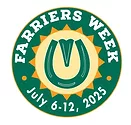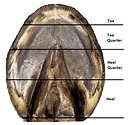Advertise Follow Us
Items Tagged with 'Jacob Butler'
ARTICLES
2025 Farriers Week: Farrier Spotlight
Welcome to the 13th annual Farriers Week Farriers Spotlight!
Read More
Farrier Families Share Strategies to Teach Hoof Care
Horseshoeing might be in their genes, but there’s plenty of blood, sweat and tears
Read More
Winner of the 2022 Mail-In Forging Exercise
Jacob Butler wins the contest judged by Craig Trnka as the 2022 International Hoof-Care Summit
Read More
Can a Conformational Deformity be Corrected or Maintained?
The answer lies in whether the conformational problem will return or worsen if regular farrier visits end
Read More
When are Clips Appropriate and Inappropriate?
Usage should be determined on a horse-by-horse basis
Read More
Defining The Hoof Quarters
The prevalence of caudal foot problems leads Hall Of Fame farrier to spell out the critical, yet elusive, description
Read More
IMAGE GALLERIES
2015 Centaur Forge Clinic with Jacob Butler
Dozens of farriers ventured to Burlington, Wis., to attend the Oct. 3, 2015, Centaur Forge clinic. Jacob Butler, an instructor from the Butler Professional Farrier School near Crawford, Neb., provided attendes with a live demonstration followed by lectures.















